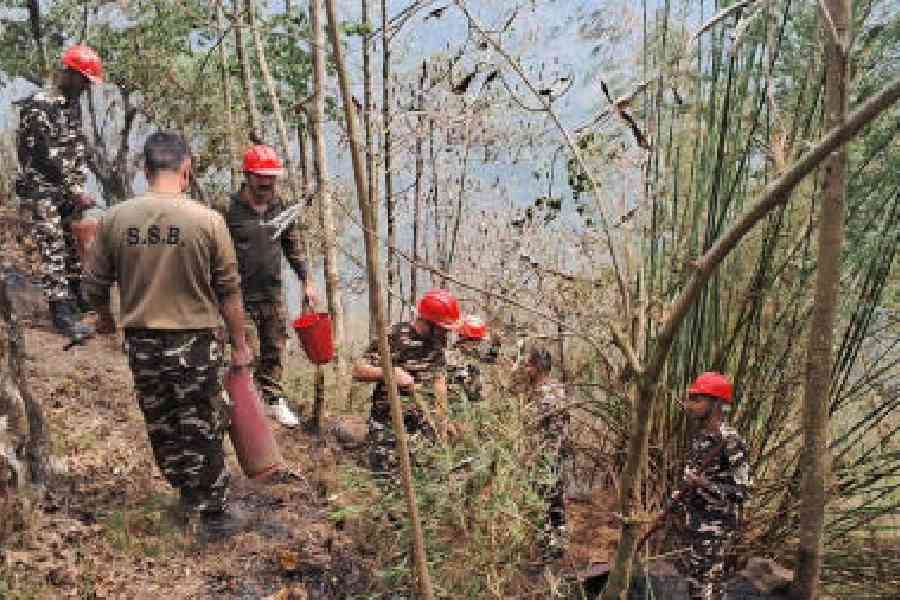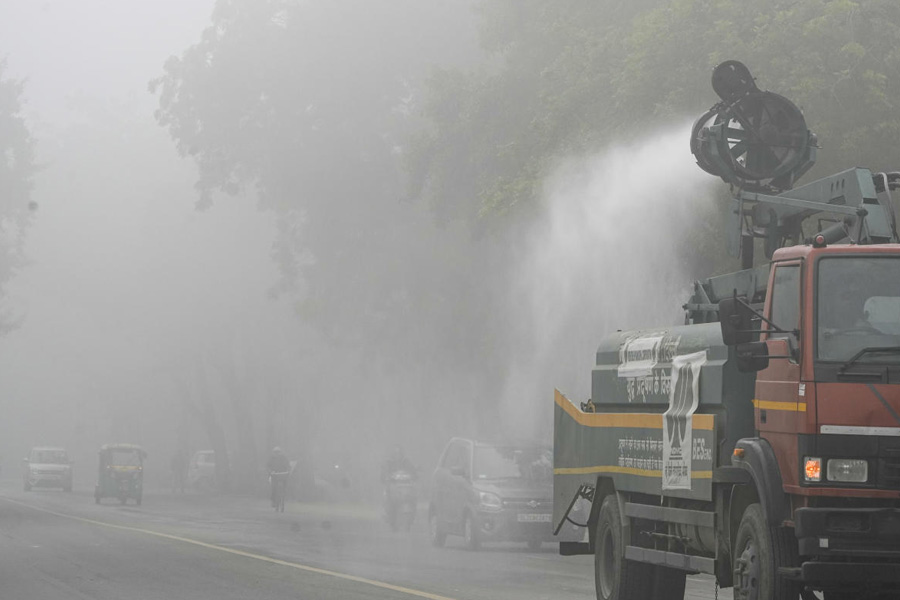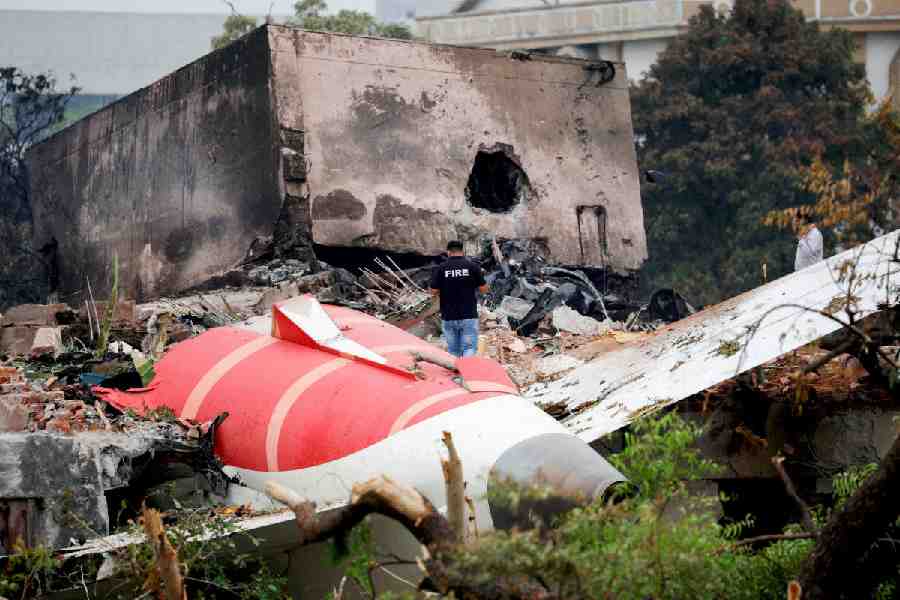Wildfires continue unabated in north Bengal during the ongoing dry spell, much to the concern of foresters and nature conservationists.
On Thursday, a fire broke out in the Gorumara National Park — the second largest habitat of one-horned rhinos in Bengal — in Jalpaiguri district and destroyed the foliage and undergrowth on around 50 hectares. Forest department personnel and fire tenders took hours to bring the fire under control.
Similar fires broke out in a stretch of the Baikunthapur forest, on the outskirts of Siliguri, and in Jaowari, a village in the Bijanbari block of Darjeeling district, on Friday.
While foresters and firemen doused the flames in Baikunthapur, the Sashastra Seema Bal (SSB), which is posted along the India-Nepal border, controlled the blaze in Jaowari.
Smoke and the flames were seen under the Dabgram range of the Baikunthapur forest division. “The fire broke out near the Teesta canal on the way to Gajoldoba of Jalpaiguri. It started spreading steadily with thick smoke billowing across the area,” said a Gajoldoba resident.
The forest staff and fire tenders reached the spot and could eventually control the flames. Earlier, a similar fire had broken out in the Sarugara range of the division and in some forests of the Kurseong forest division.
Jaowari is under the jurisdiction of Lodhama police station of Darjeeling district and near Manebhanjyang — known for the famous Sandakphu trek. When the flames were spotted at Jaowari, along with foresters, police and villagers, the SSB personnel doused the fire.
A team of 20 personnel under the leadership of an inspector was sent to the spot to control the situation.
“A timely intervention of the SSB and others helped in controlling the fire before it could reach the residential areas of the village. The SSB worked for hours to ensure that the fire didn’t spread further,” said a villager.
Frequent wildfires have led to an increase in air pollution in Siliguri and its surroundings.
Bhaskar J.V, the chief conservator of forests (wildlife, north), said in most cases, it was found that fire occurred in such places of forests where people move in frequently. “These wildfires occurred in areas where stretches of the forest land are covered with foliage,” he said.
The monitoring and assessment, he said, will help the forest department determine whether there is any loss in the habitats of wild animals.
Asked about other measures, the CCF said wildfires are being monitored through satellite from a control room in Calcutta. The imageries help them promptly send teams to the affected areas to control the flames.
Representatives of NGOs working on the conservation of nature and wildlife in north Bengal, however, pointed out that frequent wildfires affected the rich biodiversity.
“The wildfires are affecting the rich biodiversity of north Bengal. It is necessary to create a separate infrastructure with adequate manpower to stop such fires. Also, an extensive awareness drive in the fringe areas of forests is the need of the hour, as so far, the fires which have been reported were either accidental or man-made,” said Animesh Bose, the programme coordinator of the Himalayan Nature and Adventure Foundation that is based in Siliguri.










